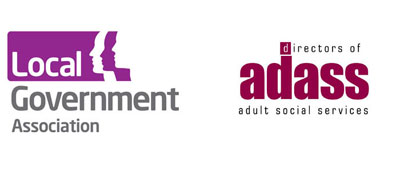The aim of the framework is to help directors of adult social services work with their colleagues and partners to identify how they can improve how they support adults with a learning disability and how they can be assured that the care and support in their area is good value for money.
Outcomes and improvement framework
Commissioned by the LGA and the Association of Directors of Adult Services (ADASS)
The purpose of this framework
Around 1.04 million people aged 15 to 64 in England have learning disabilities. This group experience disproportionate levels of inequality and their quality of life outcomes are lower than it is reasonable to expect in the 21st century.
The development of this framework has been overseen by the ADASS/LGA National Learning Disability and Autism Steering Group. It was formed at the end of 2019 to lead developments to improve how adults with learning disabilities are supported by councils and their partners.
The steering group’s vision for how adults with learning disability will be supported to live the lives they want to live, is to:
Support and value adults with a learning disability, and their families/carers, to live safe, well and fulfilled lives in communities”.
The vision has six interrelated and overlapping elements.
- Inclusion – Support people to have good lives in their communities and to be treated with dignity and respect.
- Equal access - To opportunities and services e.g. contributing to community life, social and leisure opportunities, housing, banking, jobs, health, and transport.
- Person centred planning and support – Involve people, families, and carers in solutions that respond to the individual strengths and needs.
- Safeguarding – Be safe in communities and free from the risk of discrimination, hate crime and abuse.
- Sustainable models of support – A commitment to focus on developing these.
- Progression – Recognising that people with disabilities (including the most complex) have the potential to progress and develop.
Scope of the outcomes and improvement framework
The framework is principally aimed at addressing services for adults with a learning disability and young people in transition from children’s services to adult services. This includes autistic people who also have a learning disability. It does not include autistic people without a learning disability, as they are likely to have different requirements. For brevity we refer to all the people in scope as adults with learning disabilities although many of the people in scope will be people with learning or intellectual disability only.
Structure of the framework
The framework is in three sections:
- Section 1 -The essentials: This is two parts. Part 1 is this Introduction. Part 2 is a self-evaluation tool based on an overview of the key data and 15 questions high level self-assessment questions. Together these will provide an overview assessment and will help identify areas for possible improvement warranting more investigation.
- Section 2 - The more detailed look: This consists of six parts (parts 3-8). Each part focuses on one from six domains in the outcomes and improvement framework. Each part includes: A narrative setting out what good looks like, describes the associated outcomes, and provides a set of quantitative outcome and other indicators.
- Section 3 - The supporting resources: This includes a summary of the research that informed the design of the framework and provides the evidence base, several case studies describing good practice, and a series of annexes providing supplementary resources/information.
Summary of the framework
Six domains in the outcomes and improvement framework:
- Provide systems leadership, governance and management arrangements
- Understand demand and use prevention and early interventions effectively including transitions
- Enable a care and support system that supports adults with learning disability to have a good quality of life
- Develop the local workforce to have the capacity and capability needed to support adults with learning disability needs
- Support adults with learning disability to stay safe, i.e. live the lives they want to
- Operate efficient and accessible business systems and processes that ensure value for money
How to use the framework
A rights-based approach
Throughout this outcomes and improvement framework we have used the principles of a rights-based approach to inform the inquiry.
This is reflected in each section’s description of good practice and in the prompts and questions incorporated into the self-evaluation tool.
References to sources of guidance and additional information about rights-based practice/approaches are included in the document.
A continuous approach to improvement
The outcomes and improvement framework is designed to be used on a continuous basis.
Step by step approach to using the framework:
- Quick self evaluation of outcomes data and key enablers
- Choose which of the six outcomes and improvement domains to prioritise
- Detailed assessment of priority domains
- Improvement planning using linked resources
- Implement improvement plans and monitor outcomes and others.


